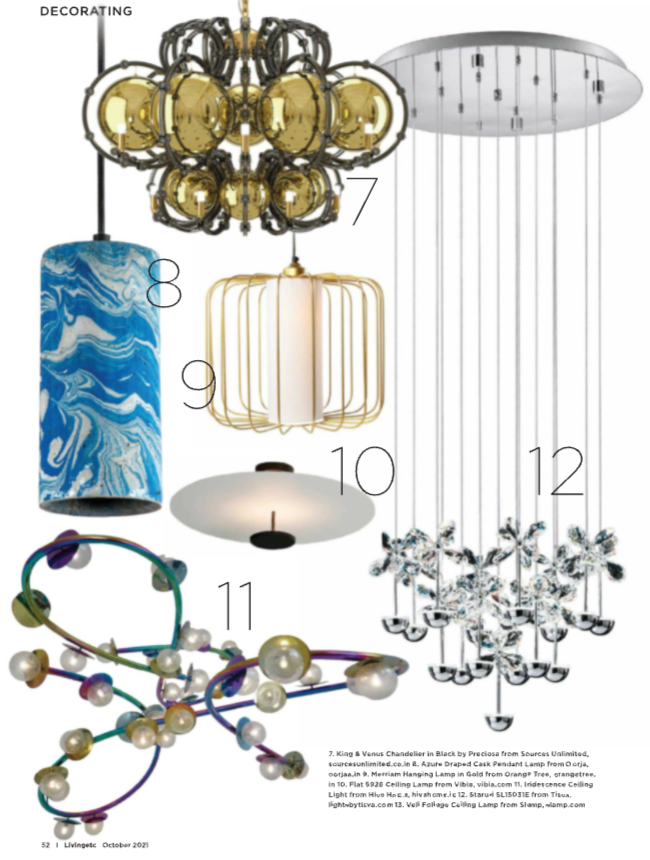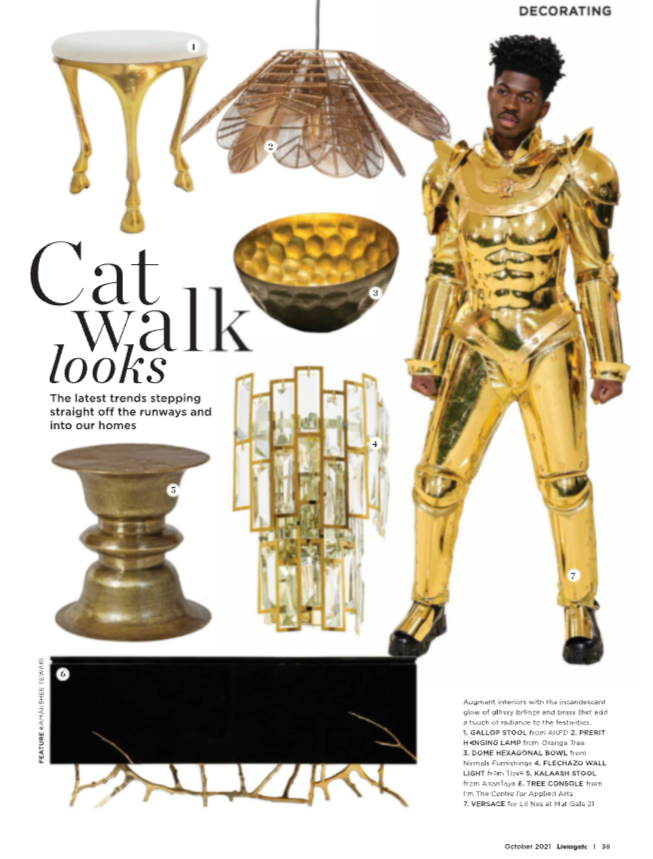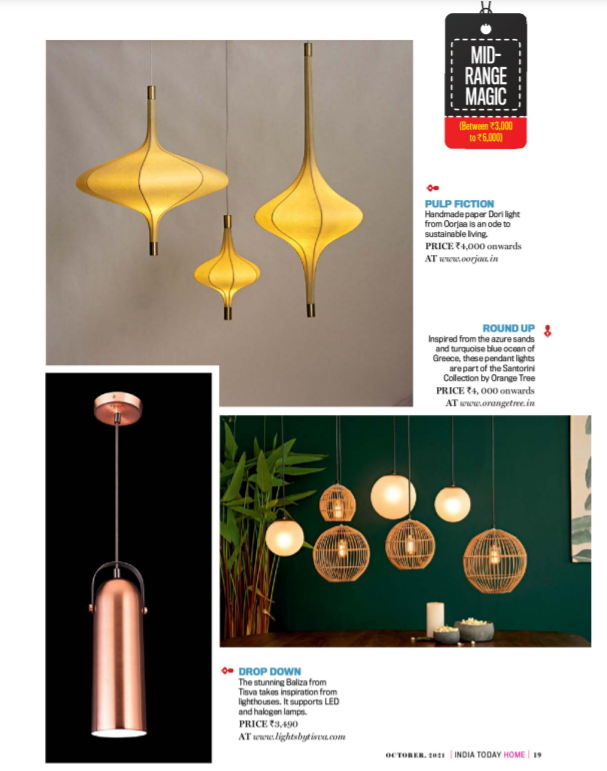Principles of Electricity
Electrons, which orbit around the nucleus of an atom, are electrically charged particles. These can be made to move from one place to another. This flow of electricity from one place to another is called electric current; and the rate of such flow is measured in amperes (amps, A). The potential amount of electrical flow is called voltage and is measured in Volts (v).
To illustrate these terms take the example of water flowing through a pipe. The pressure exerted on the pipe will be volts, and the amount of water released at the end 1 liter/ per minute is the flow and can be measured in amps. The pipe is the conductor or wire, where larger the pipe greater will be the amount of water/electricity flowing through it. The faucet being the resistance or dimmer through which a bulb lights up.
The path through which electric current flows is called a Circuit. If there are no gaps in the circuit it is called a complete circuit. Circuits with gaps are called Break in the circuit.
When there is a delay or prevention in the electric flow it is called Resistance, which results in light or heat. A Resistor is a device placed in an electrical circuit to produce a specific amount of resistance and thereby produce light. The amount of resistance is determined by the type of material used in the Resistor. If electricity flowing through a circuit is intercepted by an open switch there will be no current.
Wiring
Materials through which electricity flows easily are called Conductors. And materials through which electricity does not flow easily are called poor-conductors or insulators. All metals are good conductors of electricity, with silver being the best. However due to the cost involved, copper another good conductor of electricity, is used instead of Silver. Almost all copper wires are encased within a poor conductor (like rubber), to ensure that electric flow is limited to the wire. Such wires are called insulated wires.
Insulated wires are at times further covered by a protective covering. Different types of coverings are used for different purposes. Flexible non-metallic sheathed cable (Romex) and flexible metal sheated cable (BX) are generally used in single family homes. Commercial buildings generally use flexible metal conduit (Greenfiled) or rigid electrical metal tubing (EMT); the latter has a longer lifespan.
Circuits
Direct Current (DC) is current that only flows in one direction. In Alternating Current (AC) the direction of flow is reversed at regular intervals. But it is to be noted that even AC has a single directional flow as illustrated below. We mostly use AC. A cycle is a complete wave of current that flows through all the values before repeating itself. The unit Hertz (Hz) is used to measure the number of cycles that occur every second. This is also known as Frequency.

Series Circuit
Suppose in a line of decorative lights, one light goes off, resulting in all the other lights to go off, it is called a Series Circuit. This is because the filament of the lamp is also a part of the circuit and when it burns out, it causes a break in the circuit. For such circuits to work all lamps need to be of the same wattage. If a lamp with a higher or lower wattage is inserted in between it will result it all other lamps burning more brightly or dimly. Hence, these circuits are also called Load Sensitive Circuits.
Parallel Circuit
Current will always follow the shortest path. If wires are not insulated and are touching one another, than current will jump from one wire to another instead of following the intended course. This results in short circuits.When electricity flows parallelly to different lamps it is called a Parallel Circuit. Here if one lamp goes off or is of a different wattage it won’t affect the other lamps in the circuit. These circuits are thus not load –sensitive.
Short Circuit allows a stronger-than-usual flow of electricity. This causes the wires to heat, and can result in a fire. To avoid such fire hazards, a fuse or a circuit breaker is installed, which breaks of the circuit before the wires overheat. A fuse uses a thin metal strip as part of the circuit, which melts when overheated and thus breaks the circuit. In circuit breakers excess current flips over the circuit breaker interrupting the electric flow.
Electrical Distribution
Electricity enters a building – residential or commercial – through a service panel. Wires from this panel distribute electricity all over the building. Since all wires have a little resistance, the longer current has to travel through the wires the weaker it becomes. This loss can lead to dim lights and appliances working sluggishly. To avoid this use wires with larger diameters, which have lower resistance. Commercial buildings tend to use such wires with large diameters. It would prove to be very expensive if all circuits in commercial buildings were run from the entrance service panel through thick wires. This arrangement would also lead to a loss in electric current as it has to travel long distances. To avoid this, commercial and large buildings use Feeder circuits. These circuits transport electricity from the primary entrance service panel to smaller inner panels called Panel Boards. These boards are located all over the building and they in turn distribute electricity locally through smaller circuits called Branch Circuits.
Power Consumption
A Watt indicates the rate at which electricity is changed into another form of power (light/heat). It can be calculated my multiplying amperes with voltage (W= V x A).
Energy is the amount of electric power consumed over a time period. It is measured in Kilowatts/per hour (kWh). (kWh = kW x h).
Life Cycle Costs
The cost of lightings systems – lamps and luminaries are only a one-time cost. The cost of electricity or operating cost is the highest, followed by maintenance cost in commercial places (includes labour cost for repair, replacement etc. of luminaries).
A typical cost analysis of electricity will include, lighting system and installation cost, electricity cost based on burning hours per year, labour costs including those incurred due to dirt and cleaning, and interest cost on the total initial investment.
When comparing the cost of one system with another, the greater initial cost of a more effective system will always result in lower total cost due to greater power saving and longer life. When comparing two different types of system it is not possible to assign a monetary value to the quality of light.
Costs comparison is made for equal illuminance values of equivalent quality. If there is a difference in the connection load, additional air-conditioning cost also must be included for the system with the heavier load.
Switch Control
A switch is a simple device which breaks the flow of electricity in a circuit when switched off, and allows electricity to flow when switched on.
Manual Switches
The manually operated toggle switch (the most common variety) works via a metal plate. It completes the circuit by snapping one metal piece over the other when switched On. Mercury Switches operate silently and have a vial of mercury. Contact is made between the two points through the electrodes in the mercury when switched on. A Rocker and A Button Switch works in the same manner.
A Single-Pole, single throw switch has only one connection between the lamp and the electric supply. When switched on it completes the connection. It is the most common type of switch to be found in lighting systems. It opens only one side of the circuit hence it is called Single-pole; and only moves between a closed and open position (either switched on or off) hence called single throw.
Single-pole, double throw switch can direct the current in either of two directions. It is used to alternately turn on two different lights with a single switch action.
A double pole, single throw switch is able to direct current in two different paths. It is used to operate two appliances together for example a light and a fan.
A Three way switch controls one appliance/lamp from two points. A four-way switch is capable of controlling an appliance/lamp from three different locations. A five way switch from four locations, and so on and so forth.
Timers
A timer is capable of switching on and off a lamp when needed and not needed respectively. There are a variety of timers from simple integral timers which can operate between 5 mins to 12 hrs, to microprocessors which can be programmed for a year in advance. While, Electromechanical time Clocks can operate between 24 hrs to 7 days.
Occupancy Sensors
Also known as Motion Sensors they switch on luminaries when someone is present in the designated space/area and switches lamps off during absence. They are used to conserve energy. Occupancy is sensed by any of these four different methods: audio, ultrasonic, passive infrared or optical. And can be placed on ceilings, walls or floors.
Occupancy Sensors can be used with manual switches, timers, daylight sensors and dimmers. Careful product selection and sensor location is essential for occupancy sensors.
Photosensors
Photosensors or Daylight Sensors use an electrical component which turns daylight into an electrical signal on the basis of which it operates – switching lights on and off. This electrical component is called Photocell (short for photoelectric cell). Once the Photosensor receives this signal via the photocell it can either switch on or off the lamp, or switch on a certain quantity of light which compensates for the loss of light. The latter are sophisticated systems which can adjust light output dependent on the quality of daylight. There are different photosensors for indoor and outdoor use.
Wireless Remote Control
Radio Controlled Systems
A few lights systems can be controlled by wireless remotes connected via radio waves. These can also have an audio-visual interface. Such systems use radio frequencies in lieu of wires. These systems can be controlled from multiple locations in the transmission area.
A few problems with RF (Radio frequencies) based lighting systems are that they are expensive and other radio waves may interfere and disturb operations. They are useful when luminaries are located such that wiring them becomes difficult or more expensive.
Infrared Preset Control
Infrared preset control allows users to create and recall settings for their electric systems. In other words these lighting systems are programmable. The hand held (IR) remote sends a signal to the dimmers located in the lighting system, upon which the lamps can be activated or deactivated. A single room can have an unlimited number of different dimmers. However the IR remote has a range of only 50 feet (along the line of sight). Good IR systems avoid interferences with other remote radio, audio and video devices.
Dimming Control
A Dimmer is capable of producing variations in the intensity of light. Full Range Dimming is the continuous variations of light from maximum to zero intensity without any visible steps. All Dimming systems work by controlling the flow of electricity. They work on either one of these two principles: 1. Varying the Voltage and 2. Varying the time length of the alternating current (AC) flow/cycle.
Resistance Dimmers
These are the oldest type of Dimmers. They were first used in Cinema Halls and theaters. Also known as Rehostat, they work by varying the voltage. Their circuits have a variable length of High Resistance wire. The longer is the wire the greater is the resistance and greater the resistance lower is the voltage; low voltage means low lamp intensity. Since the wire needs to be considerably long, it is generally coiled.
Resistance Dimmers feature levers that are capable of changing the path of the current. It keeps changing the path of electricity from shorter paths to longer coiled paths.Dimming thus occurs in a series of steps, as the lever keeps switching places. Generally it involves 110 such steps for dimming to be flicker-less. The primary problem with such dimmers is that there is a lot of wastage of electricity, as light output/intensity gets reduced but wattage remains the same. The additional wattage turns into heat energy along the extended coil. These systems are also bulky in nature.
Autotransformer Dimmers
Autotransformer Dimmers are more economical as they work by changing the standard voltage-current to low voltage current, with only 5% loss of electricity. Unlike Resistance Dimmer no conversion to heat energy takes place. Hence they are cooler and smaller then Resistance Dimmers.

These Dimmers feature a metal arm (Resistor) that is capable of changing the path of the current. For bright light it makes the distance shorter and as dimming takes place it keeps making the path of electricity longer.
Solid State Dimmer
These are the most common form of dimmers used today. They work by limiting current flow (the alternating current cycle). They feature high speed switches which keeps cutting the sine wave (the flow of ac). This allows only a part of electricity to pass by causing the lamp to dim. Silicon Control Switch (SCS) is used for lamps below 6 KW, for lamps above the 6 KW Silicon Control Rectifier (SCR) is used.
Square Law Dimming Curve: These are the most common form of dimmers used today. They work by limiting current flow (the alternating current cycle). They feature high speed switches which keeps cutting the sine wave (the flow of ac). This allows only a part of electricity to pass by causing the lamp to dim. Silicon Control Switch (SCS) is used for lamps below 6 KW, for lamps above the 6 KW Silicon Control Rectifier (SCR) is used.
The manner in which light output/intensity responds to change in dimmer settings is known as the Square Law of Dimming. If a change in the setting of light from full bright to full dim equals the amount of electricity allowed to reach the lamp, we get a linear curve.
The eye is more responsive to changes in low intensity light than changes in bright intensity light. This relationship between light perceived and light measured is called the Square Law.
It is same with electric lamps, if it dims in a linear manner, the light source will appear to dim faster at low intensities than at high intensities. To correct this Dimmers follow the Square Law curve, herein it dims high intensity light at a faster rate than it dims low intensity lights.
Incandescent Lamps
Dimming Incandescent lamps increases the life of the lamp. As they are dimmed, these lamps tend to emit a warm orange glow of light. This suits humans, as we like warm lights at low intensity. However dimming decreases the efficiency of an Incandescent Lamp. In some cases they tend to buzz (make a sound), this can be corrected by adding a separate debuzzing coil.
Low Voltage Lamps
There are two types of transformers used in low-voltage lamps – magnetic and electronic. So before installing a dimmer in a transformer it is important to determine what kind of transformer is attached to the lamp. Magnetic transformer low-voltage Dimmers are used for Magnetic Transformers, these dimmers also protect the lighting system from DC (Direct Current) and Voltage surges, which tend to occur in Magnetic Transformers.
Similarly electronic low Voltage Dimmers are used for Electronic Transformers. These dimmers also check buzzing and voltage fluctuations that may occur in such lighting systems.
Fluorescent Lamps
Only Rapid Start Fluorescent Lamps can be dimmed as electric current is provided continuously to the cathodes, which is not the case with other types of Fluorescent Lamps. (In Instant Start and Pre-Heat lamps, electricity to the cathodes is turned off once the lamps are operational). Dimming Rapid Start lamps require their normal Ballasts to be replaced with Dimming Ballasts. These lamps also cannot be dimmed all the way to off, as they begin to flicker beyond a point. Sometimes the colour of light in such lamps tends to change in cold climates due to difference between outside and inner tube temperature. Lamp life too decreases when dimming is used
HID Lamps
Though it is possible to dim HID lamps, they are never used with dimmers due to their long warm up period; besides Dimming shortens their life span. They also tend to change colours when equipped with the dimming function.
Central Lighting Control Systems
Local single room dimming systems can control multiple dimming operations. Their dimming capacity is only restricted by the capability of the system itself. Whole Building systems are generally found in smart buildings, where the system controls various other things (like shades, alarm systems, heating air conditions etc.) besides dimming. The latter systems use sophisticated processors.
There are three kinds of processors: local, central and distributed. Local processors are located in or adjacent to the device it controls, they either control the system or send all the data to the Central processor. Central Processors collect all data and instruct the various local processors to act accordingly. Distributed processors allow local processors to make certain decisions under the control of the central processor.
Low Voltage Control Systems
Since voltage travelling through these wires is low, a lot of wires can be used in such systems. This also allows the system to have many control panels (switches) without conduits, making them less expensive, when the light needs to be controlled from many locations. Here many switches can control one light, or one switch can control many lights.
Power Line Carrier Systems
In these system a switch (transmitter) sends a signal to the lamp/device which upon receiving the signal turns its circuit on or off, as required. Many receivers can be attached to a single switch or a single receiver can be controlled by many transmitters. Similarly one transmitter can be attached to many lamps. This makes this system very flexible. However these systems may malfunction at times, with the interference of outside frequencies – like an airplane flying near the house or an electric garage door opening/closing.
Energy Management Controls
In older days control systems were installed in offices and houses simply to switch lights on and off. Today they are used to manage energy, through installation of photosensors, time clocks etc. The Central Control system is generally integrated and control many applications besides lighting.
These systems can be either operated on the basis of space (where light is needed) or on the basis of time (when light is needed).










